Transparent Squid

Image source: ocean.se.edu
The transparent cockatoo squid, also known as the glass squid, lives in the deep dark depths of our oceans. It has adapted in many ways to help it survive down there, including: retaining ammonia to give its balloon-like body and to help it float, its bug eyes to help it take in all that darkness and polka dot spots to serve as camouflage.
Cars, Trucks and Motorbikes

Image source: seaunseen.com
Yes! There's basically a highway down there beneath the waves. A treasure trove of vehicles lies beneath the sea after a cargo ship sunk in 1941 after being bombed by two German places - these vehicles have now been at the bottom of the ocean for a whooping 73 years!
Ribbon Eels

Image source: critterfish.com
Ribbon eels are one of the most amazing creatures that only divers can see. They are mostly found on healthy coral reefs and are identified by popping their heads out of hiding - its very rare to see one swimming freely, displaying its ribbon effect body - so, you best have a beady eye if you want to try catch sight of one!
Ancient treasures

Image source: pinterest.com
Crossings of the sea were recorded to have taken place anywhere between 60,000-70,000 years ago! That's a lot of years for hidden treasures to find themselves on the ocean floor. The trouble is, all those years and ocean movements will have buried the treasures under layers of sea, sand and wildlife - good luck finding anything unless you're a trained diver!
Goblin Sharks
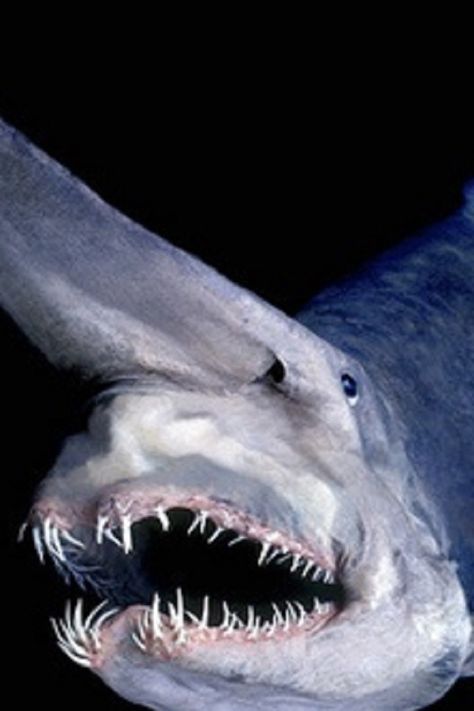
Image source: Reddit
Goblin sharks are species of fish that live in the depths of the ocean - they are rarely seen but are believed to live alone. What's impressive about them is that they can actually extend their jaw three inches out of its mouth! An ideal party trick to have when you need to catch fish to survive.
Transparent-headed Barrel-eye Fish
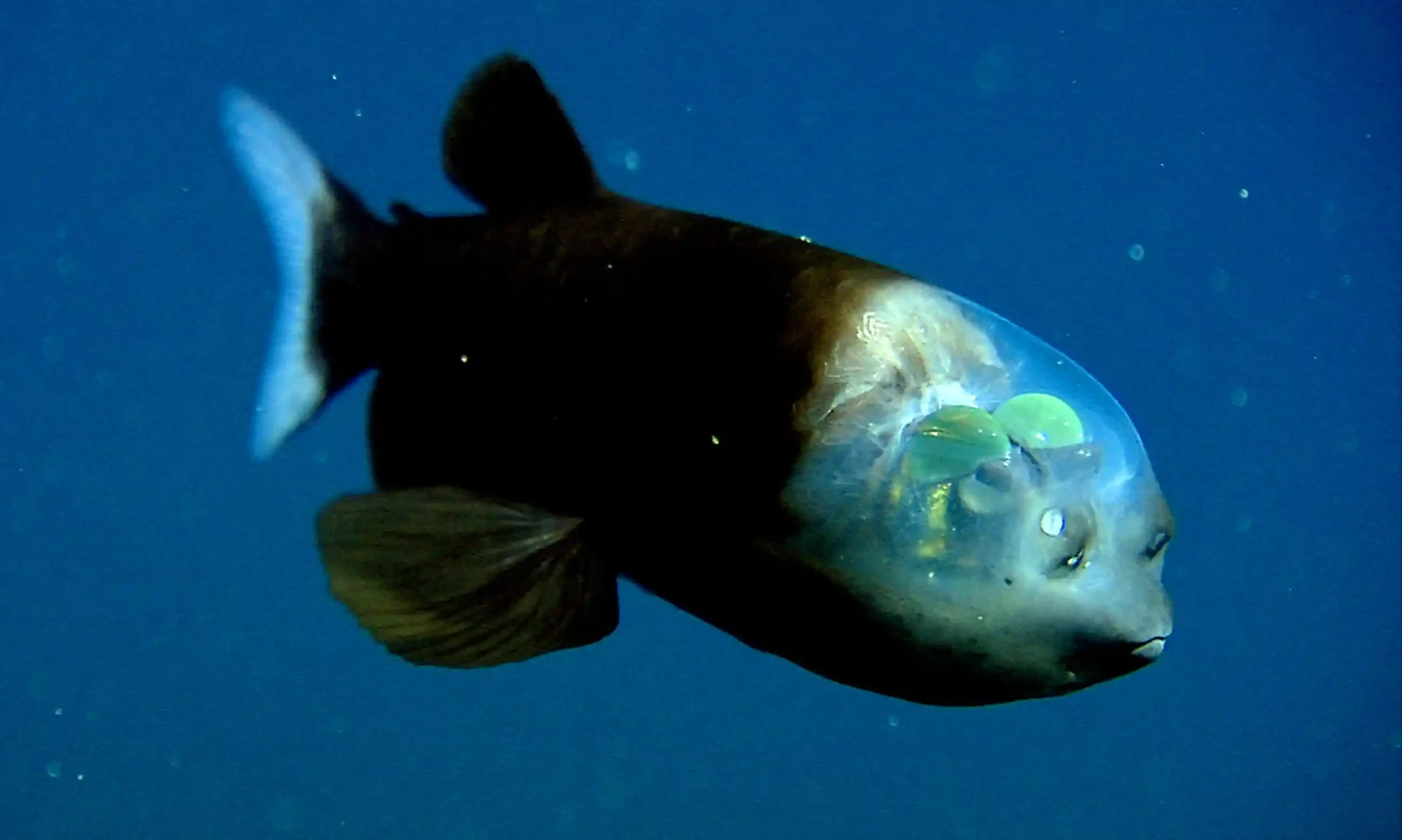
Image source: theguardian.com
In the oceans shadows lies a fish with a transparent head! Yes, you read that right! A head that is totally and completely see-through meaning they can actually look up to see if any predators are lurking. Their head has a green tinge which acts as sunglasses, allowing them to spot most prey (which have glowing underbellies).
Ancient sculptures

Image source: Reddit
Deep in the ocean you can find statues riddled with coral reef and fish making their crevices their home. These statues came about through natural disaster sinking cities but also thanks to famous artists designing and creating them and then plonking them in the sea!
Blob Fish

Image source: Reddit
The Blob fish has been known to be the ugliest creature on Earth. However, the Blob fish actually only look like a miserable pink lump when it has been dragged from its habitat to the surface of the water and this is down to it being in uncomfortable surroundings. When its at home, at the bottom of the sea, the Blob fish actually just looks like any other fish!
Roman cities
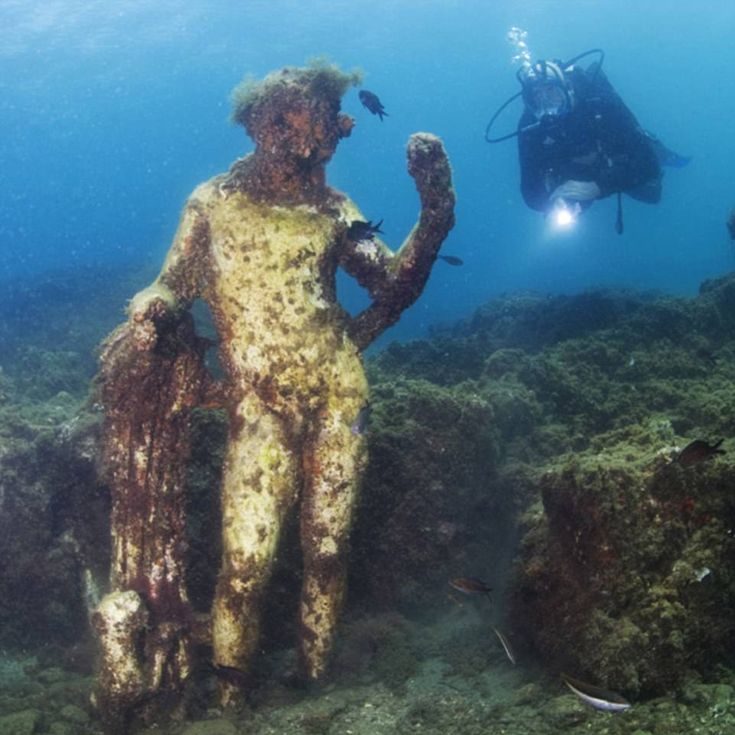
Image source: pinterest.co.uk
The ancient resort of Baiae, in the gulf of Pzzuoli was said to the the party town of the Roman era. However after volcanic activity which caused the earth to rise and fall, the city sunk about 4-6 metres under water. Now the sight is a popular tourist attraction but be warned, volcanic activity is still rife in the area today!
Transparent Sea Cucumber

Image source: ocean.si.edu
Deep in the depths of the Gulf of Mexico lies the transparent sea cucumber: a rarely sighted creature that creeps around on its front tentacles. Its so transparent that you can se its digestive system in action as it scoops up sediment in to its mouth and digests it to gain the nutrients from it - gross!
Mayan ruins

Image source: sfgate.com
Underwater archaeologists have discovered human remains in the Maya ruins in Mexico, with the floors of the cave being littered with human remains. In order for archaeologists to venture in to the caves, the locals made offerings to God as to ask permission to disturb those laying in peace.
Angler Fish

Image source: YouTube.com
The Angler fish has been dubbed one of the most grumpiest fish in the ocean - I mean wouldn't you be grumpy if you looked liked that and you live in some of the worlds most inhospitable environments? This fish is not to be downplayed though as it can eat prey up to twice its own size!
Jesus

Image source: Reddit
'Christ of the Abyss' is a sunken bronze statue of Jesus himself, located in the Mediterranean sea. The statue was created by the Italian sculpture Guido Galletti and has since been donated to The Underwater Society of America. However the statue is yet to be removed and instead has been left where it sank in memory for a famous diver who died nearby, Duilo Merchant.
Sea Pig

Image source: wired.com
Sea pig are one of the oceans creatures that you'll never likely see if your lifetime. As the name suggests, they are similar to the land 'pig', except they have many more legs and no eyes! They are a type of sea cucumber and love living at the bottom of the ocean. Fun fact: if sea pigs are brought to the surface of the ocean they will disintegrate!
13,000 year old skull

Image source: ibtimes.co.uk
Naia is the name given to the 13,000 year old skull lying at the bottom of the ocean. It is believed to be a human skeleton of a teenage female and it is said that she died by falling in to a dry cave system that has since filled with water over the years.
The Piglet Squid

Image source: dailymail.co.uk
The piglet squid really does look like that! I know, it's like something out of a cartoon! This little ocean dweller is found in the Pacific and Atlantic oceans. They unfortunately don't live for very long and once the mating has happened and the eggs laid, both male and female piglet squids die.
Pirate ships

Image source: news.sky.com
The oldest known boat to be found in our oceans is a wooden canoe crafted over 10,000 years ago! However, todays waters are scattered with an abundance of sunken boats and ship, including pirate ships loaded with silver and gold. Archeologists are fascinated with these vessels as they act like long-forgotten time capsules.
Pollution

Image source: greenpeace.org.uk
We all hear about the plastic pollution initiative about plastic entering our waters, but we rarely hear about how much of it is actually already sat at the bottom of our oceans. Amongst some of the most incredible species in the world, lies 14m tonnes of micro plastics, meaning there could be 30 times more plastic at the bottom of the ocean than we see floating at the surface.
A Fangtooth
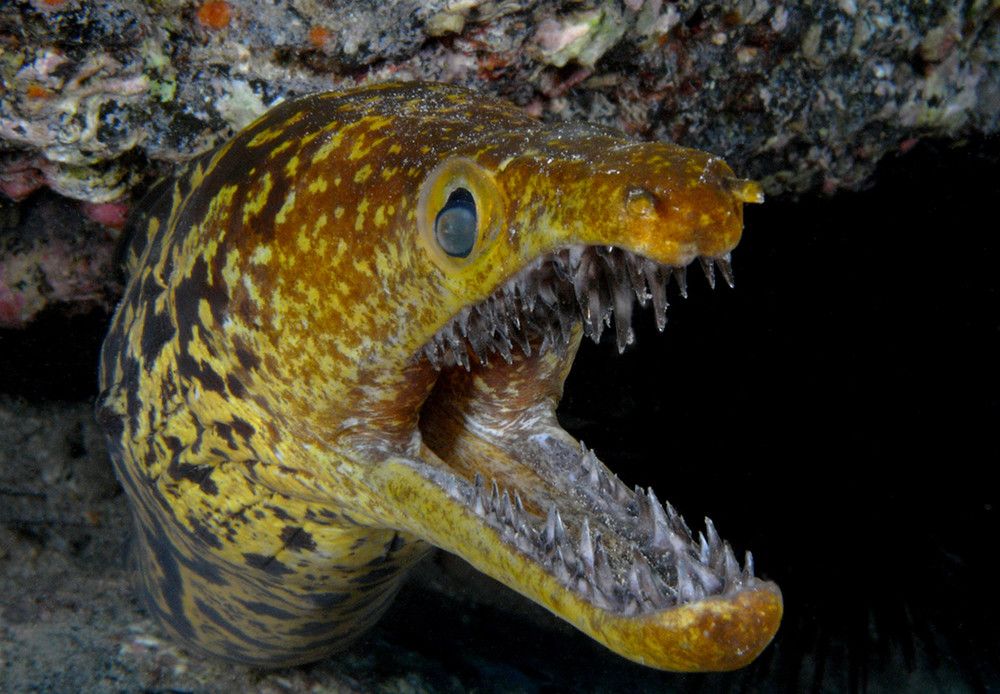
Image source: Reddit
The Fangtooth, otherwise known as the 'Ogre fish' is a bony fish that lies at tremendous depths of our oceans - they are the deepest living fish! Scientist known more about the young fish than the mature as the older they get, the further they descend to the bottom of the ocean so therefore are hard to find and to study.
Mermaids

Image source: Reddit
Yes, that's right! Mermaids live in our oceans! Well, kind of. Mermaids are mythical creatures that have been in stories for decades and some people have even claimed seeing real-life mermaids swimming in our oceans. However, there is very little, to no evidence that mermaids actually exist, despite some stories being extremely believable.
Big Fin Squid

Image source: nerdist.com
This long-armed creature is known as the Big Fin squid - a mystery squid! and the 'daddy long legs' of the ocean world. The long, tentacles are used like a spider web to help the squid catch it prey, however seeing this in action is hard to come by as they are extremely rare to see!
Egyptian tombstones

Image source: mirror.co.uk
Among ancient cities, long forgotten at the bottom of the ocean, lies Ancient Egyptian ruins and tombstones. Wreckages with ancient hieroglyphics slates, statues of leaders and Gods and beautiful jewellery have been discovered. There is also talk of a mysterious crystal pyramid in the Bemuda Triangle but that is exactly that - a mystery!
Sea Gooseberry

Image source: pinterest.com
These sea gooseberries really do look like little tasty delicacies bobbing around the ocean and eventually ending up on our beaches. Would you believe that these little jelly-like balls are actually incredible predators? Eating up to 10 times their bodyweight in one day! And they even like to munch on each other!
Bioluminescent Deep Sea Creatures

Image source: huffpost.com
Many of the oceans creatures are in fact glowing! Yes, actually glowing. Like a beautiful light display hidden away for only night divers to see. Bioluminescent creatures produce their own light through a series of chemical reactions and many creatures rely on this to find prey, camouflage and to communicate.
Vampire Squid

Image source: vampires.com
Unlike the name suggests, Vampire squid don't actually like to feed on blood - disappointing, I know! It can turn itself inside out to avoid predators and if feeling threatened, it will glow to distract those attacking it. A cool fact is that it can regrow its limbs should an accident occur!
Giant Jellyfish
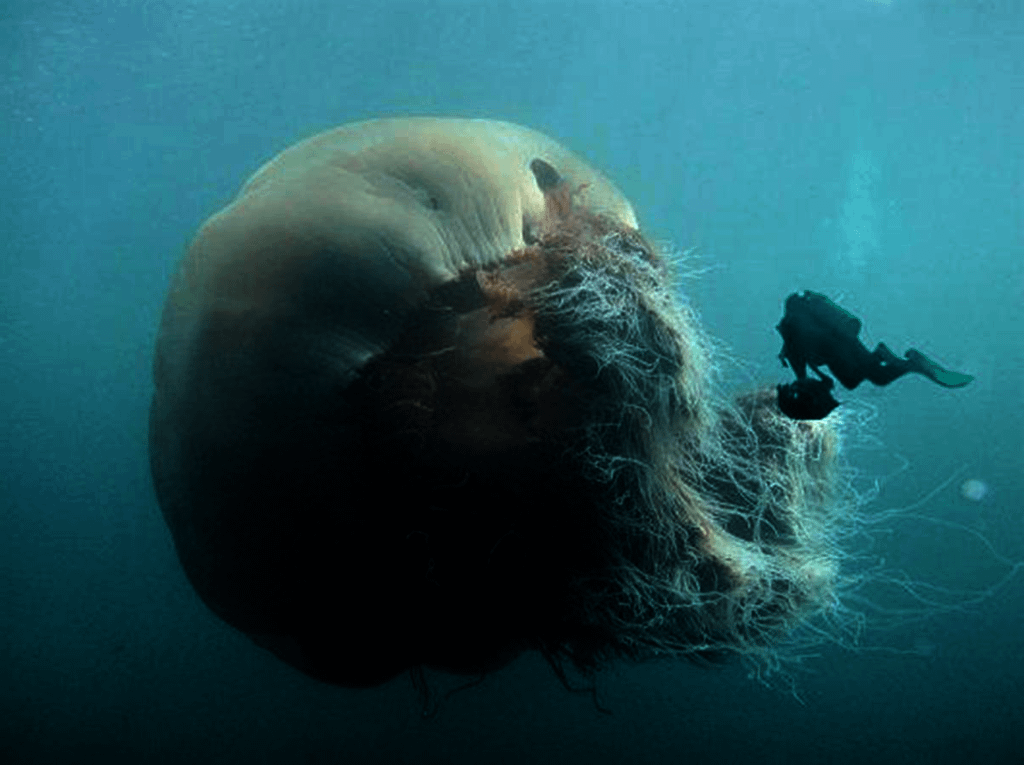
Image source: Reddit
Giant jellyfish, otherwise known as 'Lion's Mane Jellyfish' have in fact been around for millions of years, even before dinosaurs! It cannot be missed with its tentacles spanning up to 120 metres in length! They can deliver a powerful sting to humans - unsurprisingly when its tentacles are so long and there are so many of them.
Sea Devil

Image source: mirror.co.uk
The Sea Devil is of the Angler fish family. It gas a gaping mouth, sharp needle teeth and a shocked expression. It is an extremely rare species and there are only a limited number of sightings of it in the wild, making studying this creature particularly challenging for scientists.
Fluorescent Coral

Image source: pinterest.de
Deep beneath the surface of the sea, you can find an abundance of rainbow coral. Corals get their glow from a variety of pigments that actually act as a sunblock to their sensitive surfaces. The reason we can see the coral so brightly the deeper it is, is that the light of the corals is not polluted by sunlight - just like seeing the stars away from street light pollution.
More ocean!

Image source: universal-sci.com
One of the greatest things about the ocean is that there is still so much of it yet to be discovered: it might be shocking to read that scientists have only discovered around 5% of the ocean! The rest, especially the depths, are yet to be explored and could contain some of our worlds greatest secrets.
A cafe

Image source: drizz.com
Yes, a cafe! Not quite the place to get your morning cappuccino, but a place to watch sharks feed. Once a year, around 20% of the Great White shark population descend from the Californian waters to those of Hawaii. However some do not make the trip and instead stop off at the 'White shark cafe': a spot in the middle of the Pacific where they go to randomly feed!





























